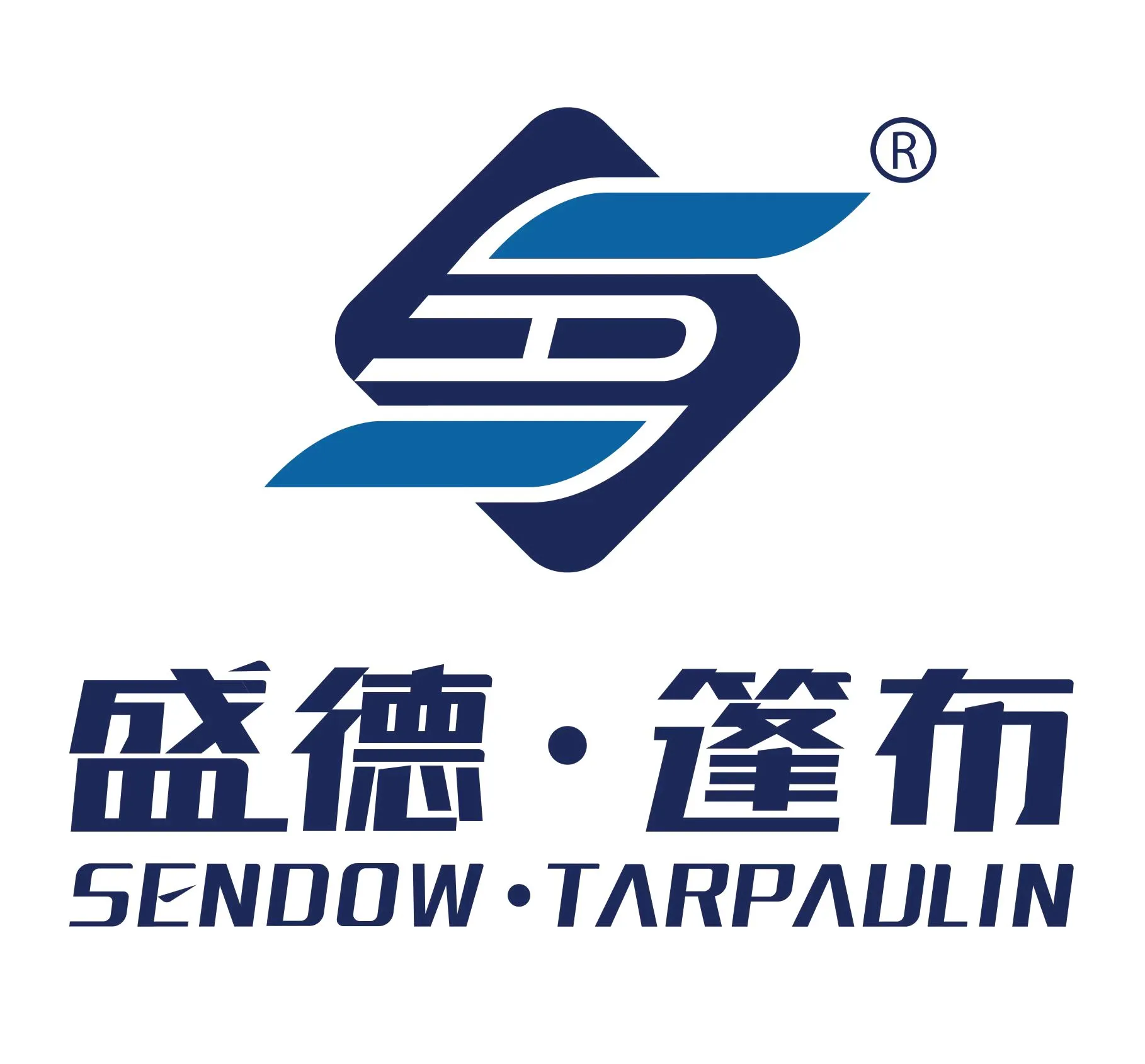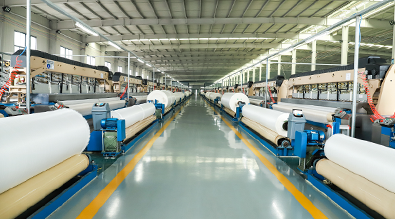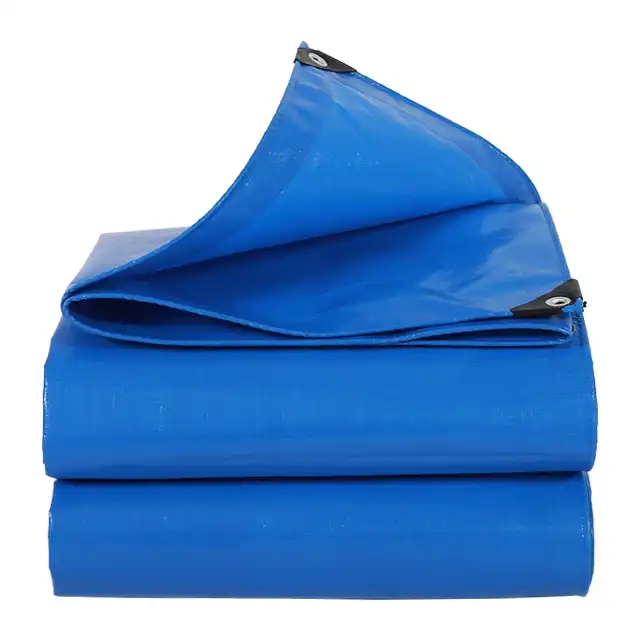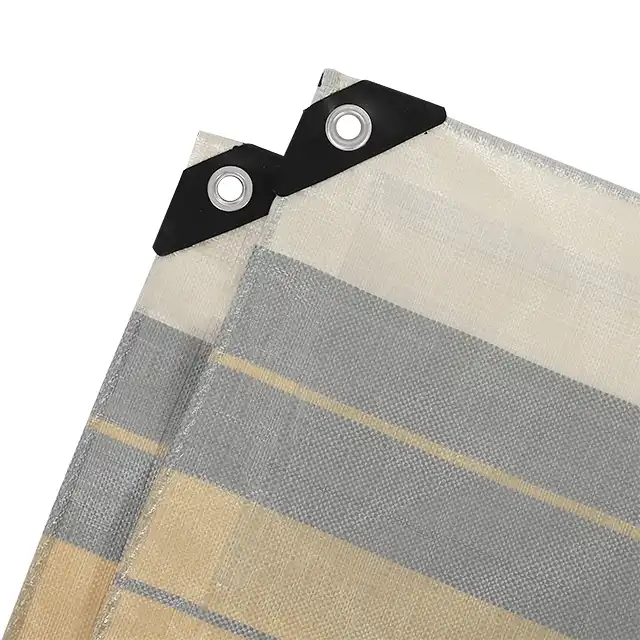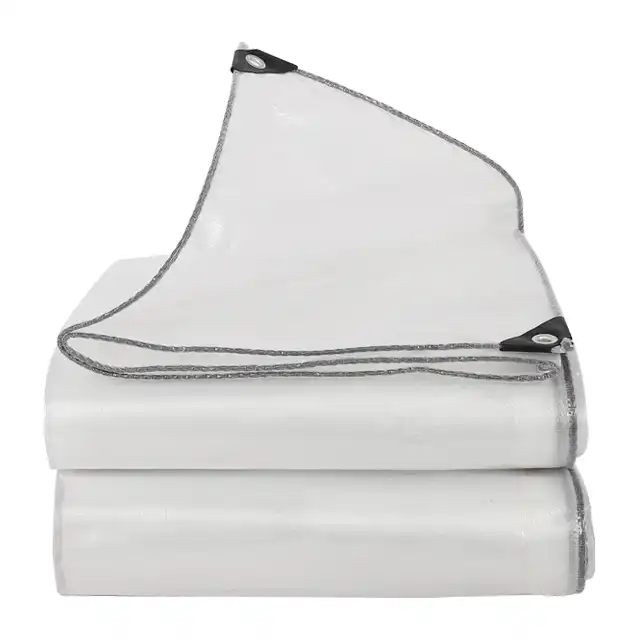What Drives the Polyethylene Tarpaulins Market Demand?
The polyethylene tarpaulins market continues to experience robust growth globally, driven by versatility, cost-effectiveness, and expanding applications across multiple industries. As a fundamental protective covering solution, polyethylene tarpaulins have evolved from basic protective sheets to engineered products with specialized features, meeting increasingly diverse consumer and industrial needs. The market's expansion is influenced by factors including construction sector growth, increasing awareness of asset protection, agricultural advancements, and disaster management requirements. With manufacturers like Linyi Shengde Plastic Co., Ltd leading innovation in material science and manufacturing techniques, the polyethylene tarpaulins market is responding to changing customer demands with higher-performance products, sustainable options, and specialized solutions tailored to specific applications.
Key Market Growth Factors

Economic Factors Driving Market Expansion
The polyethylene tarpaulins market has witnessed substantial growth due to economic factors that influence both supply and demand dynamics. The construction industry's global expansion has created unprecedented demand for effective weather protection solutions, with polyethylene tarpaulins providing cost-effective coverage for construction materials, equipment, and unfinished structures. These protective sheets prevent moisture damage, UV deterioration, and contamination, extending the lifespan of valuable resources and reducing project delays. Additionally, the logistics and transportation sectors have become significant consumers of polyethylene tarpaulins, using them to secure and protect cargo during transit across various weather conditions. The material's lightweight yet durable nature makes it ideal for truck coverings, container protection, and warehouse applications where goods must be safeguarded without adding significant weight or cost. Furthermore, the agricultural sector has embraced polyethylene tarpaulins for their versatility in protecting harvests, creating greenhouse environments, and preventing soil erosion. As Linyi Shengde Plastic Co., Ltd has observed through its extensive manufacturing experience, high-density polyethylene (HDPE) woven fabrics with low-density polyethylene (LDPE) coating create products ranging from 65gsm to 280gsm, accommodating different strength requirements while maintaining essential waterproof characteristics. This versatility enables the polyethylene tarpaulins market to respond effectively to economic pressures while delivering reliable protection across multiple industries.
Technological Advancements in Materials and Manufacturing
Technological innovation has transformed the polyethylene tarpaulins market, elevating the performance and application potential of these protective coverings. Modern manufacturing processes, exemplified by Linyi Shengde Plastic's advanced production facilities, combine high-tech yarn extruding, sophisticated weaving techniques, and precision coating applications to create superior products. With more than 30 high-tech extruding machines capable of producing yarn thickness from 400D to 2500D, and unique 5m and 4m width fabric weaving capabilities without joints, manufacturers can now deliver previously impossible specifications. The polyethylene tarpaulins market has benefited tremendously from these advancements, with products now featuring enhanced UV protection between 1%-7%, improved tear resistance, and arctic flexibility even in extreme temperatures. The development of specialized coatings has further expanded functionality, creating tarps that are not only 100% waterproof but also resistant to chemicals, mildew, and fire in some formulations. These technological improvements have opened new market segments for polyethylene tarpaulins, including specialized applications in aquaculture as impermeable barriers, in agriculture as greenhouse fabrics, and in leisure activities as durable tent materials. The ability to customize mesh counts from 10x10 to 14x14 and adjust thickness from 7 to 12 mil allows manufacturers like Sendow Tarpaulin to meet specific client requirements across diverse industries. This technological evolution has significantly contributed to the market growth by expanding both the performance capabilities and application versatility of polyethylene tarpaulins, making them indispensable in scenarios where traditional coverings would fail.
Environmental and Climate Considerations
Environmental awareness and extreme weather events have substantially influenced the polyethylene tarpaulins market, creating new demand patterns and product requirements. Climate change has increased the frequency and intensity of severe weather incidents worldwide, highlighting the need for reliable protective covering solutions that can withstand harsh conditions. Polyethylene tarpaulins, particularly those manufactured with advanced UV treatment like Sendow's products with 1%-7% UV protection, provide essential safeguards against intensified solar radiation, heavy rainfall, and fluctuating temperatures. This climate resilience has made polyethylene tarpaulins crucial emergency management tools, with humanitarian organizations like UNHCR, IOM, ICRC, and UNICEF—all partners of Linyi Shengde Plastic Co., Ltd—deploying these materials in disaster response scenarios. Additionally, the polyethylene tarpaulins market has responded to environmental concerns by developing more sustainable production methods and exploring recyclable materials. While traditional polyethylene remains dominant, manufacturers are investigating biodegradable additives and recycling programs to reduce environmental impact. The material's inherent durability also contributes to sustainability by providing long-lasting protection that reduces replacement frequency. Furthermore, polyethylene tarpaulins support environmental protection in agricultural applications, where they help create controlled growing environments that reduce water consumption and pesticide use. Their waterproof characteristics, combined with easy handling and anti-corrosion properties, make these tarps ideal for irrigation systems, crop protection, and soil conservation efforts. As climate adaptation becomes increasingly important across industries, the polyethylene tarpaulins market continues to evolve, balancing immediate protective needs with long-term environmental considerations.
Application-Driven Market Growth
Construction and Industrial Applications
The construction and industrial sectors represent primary growth drivers in the polyethylene tarpaulins market, with applications that leverage the material's protective qualities in demanding environments. Construction sites worldwide rely on polyethylene tarpaulins to shield building materials, equipment, and partially completed structures from weather damage. The waterproof nature of Sendow's tarpaulins—featuring HDPE woven fabric with LDPE coating—provides essential protection against rain, snow, and ground moisture, preventing costly material degradation and project delays. Beyond basic weather protection, these tarps serve as temporary barriers, dust containment systems, and scaffold coverings, contributing to site safety and environmental compliance. The material's tear resistance and durability, particularly in middle-duty products weighing between 100gsm and 180gsm, withstand the rigors of construction environments where sharp edges, heavy materials, and frequent handling would quickly damage lesser coverings. In industrial settings, polyethylene tarpaulins protect manufacturing equipment, warehouse inventory, and outdoor storage areas from environmental exposure. The material's chemical resistance makes it suitable for environments where oils, solvents, and other industrial substances might damage conventional coverings. Large-scale industrial operations benefit from Linyi Shengde Plastic's unique capability to produce tarps up to 5.1 meters in width without seams, allowing for comprehensive coverage of substantial equipment or material stockpiles. Additionally, the color customization offered by manufacturers like Sendow enables adherence to safety protocols and corporate branding requirements. These applications have grown increasingly sophisticated, with specialized polyethylene tarpaulins featuring enhanced tear resistance, anti-freezing properties, and arctic flexibility ensuring protection even in extreme industrial environments. With a monthly production capacity of 4000MT, leading manufacturers can meet the substantial volume requirements of construction and industrial clients while maintaining quality consistency through ISO 9001:2015-certified quality management systems.
Agricultural and Horticultural Uses
The agricultural sector has emerged as a significant growth segment within the polyethylene tarpaulins market, with applications ranging from basic crop protection to sophisticated growing systems. Farmers and agricultural enterprises utilize polyethylene tarpaulins extensively to shield harvested crops from precipitation, prevent moisture loss in stored commodities, and protect soil conditions during adverse weather. These applications rely on the waterproof characteristics of properly manufactured tarps, such as Sendow's products with their HDPE woven fabric construction and LDPE coating. Beyond basic protection, polyethylene tarpaulins have revolutionized certain agricultural practices through specialized applications. Greenhouse coverings made from UV-treated polyethylene tarpaulins—available in customizable weight ranges from 65gsm to 280gsm—create controlled growing environments that extend growing seasons, protect against pests, and optimize plant development. The transparency options and diffusion capabilities available through manufacturers like Linyi Shengde Plastic allow farmers to select coverings appropriate for specific crop requirements. In aquaculture, impermeable tarpaulins serve as critical components in pond liners and tank systems, containing water while preventing contamination and supporting growing operations. The material's resistance to biological degradation and waterproof integrity makes it ideal for these wet agricultural environments. Orchard operations benefit from rain covers that protect ripening fruit from excessive moisture, reducing disease pressure and improving harvest quality. These specialized agricultural applications require high-performance polyethylene tarpaulins with precise specifications regarding UV treatment, tear resistance, and dimensional stability. The agricultural sector's embrace of polyethylene tarpaulins reflects the material's versatility and cost-effectiveness compared to alternative protective solutions. With features including shrink resistance, easy handling, and the ability to withstand temperature extremes, these products have become essential tools in modern agricultural management, driving continued growth in this segment of the polyethylene tarpaulins market.
Transportation, Logistics and Consumer Applications
The transportation and logistics sectors have become major contributors to polyethylene tarpaulins market growth, utilizing these versatile coverings to protect cargo and equipment during storage and transit. Truck coverings represent one of the most visible applications, with heavy-duty polyethylene tarps protecting shipments against rain, snow, wind, and UV exposure while in motion. These applications benefit from Sendow Tarpaulin's middle-duty options weighing between 100gsm and 180gsm, offering the ideal balance between durability and weight for transportation purposes. The material's tear resistance and waterproof characteristics ensure that valuable shipments remain protected even during challenging weather conditions or extended journeys. Warehouse operations further drive market demand through applications including temporary storage coverings, load separation systems, and protection for overflow inventory stored in external locations. The availability of custom sizes—a specialty of Linyi Shengde Plastic with its extensive manufacturing capabilities—allows logistics providers to obtain precisely fitted coverings for specific storage configurations. Beyond commercial transportation, consumer applications have expanded the polyethylene tarpaulins market into recreational and residential segments. Car canopies provide economical protection for vehicles without dedicated garage space, while leisure applications include picnic pads, camping ground sheets, and recreational tent materials. These consumer uses benefit from the material's easy handling, 100% waterproof characteristics, and availability in multiple colors to suit aesthetic preferences. The versatility of polyethylene tarpaulins makes them ideal emergency preparation items for households, providing immediate protection during unexpected weather events or home repairs. The broad spectrum of applications across transportation, logistics, and consumer markets has driven manufacturers like Linyi Shengde Plastic to develop increasingly diverse product lines, with variations in thickness (7-12 mil), mesh count (10x10-14x14), and UV treatment levels (1%-7%) to address specific use requirements. This application diversity, combined with the material's fundamental protective qualities, continues to expand the polyethylene tarpaulins market across both professional and personal uses.
Future Market Trends and Innovations
Sustainable Development and Eco-Friendly Solutions
The polyethylene tarpaulins market is experiencing a significant shift toward sustainability, responding to growing environmental awareness and regulatory pressures. Forward-thinking manufacturers like Linyi Shengde Plastic Co., Ltd are investing in research and development to create more environmentally responsible products without sacrificing performance. This evolution involves exploring recycled content in tarp production, developing closed-loop manufacturing systems, and extending product lifespan to reduce replacement frequency. The durability of properly manufactured polyethylene tarpaulins—featuring HDPE woven fabric with LDPE coating—inherently supports sustainability by providing long-term protection that minimizes waste generation compared to lower-quality alternatives requiring frequent replacement. Innovative approaches include biodegradable additives, reduced-weight designs that maintain strength while using less material, and manufacturing processes with lower energy requirements. These advancements address growing customer interest in environmental impact without compromising the essential protective qualities that drive polyethylene tarpaulins market demand. Additionally, manufacturers are developing take-back programs and recycling initiatives, allowing used tarps to be repurposed rather than discarded. The waterproof, tear-resistant properties that make these materials valuable for applications ranging from truck covers to greenhouse fabrics remain intact even as formulations evolve to reduce environmental footprint. Future market growth will likely favor manufacturers demonstrating genuine commitment to sustainability, with enterprises like Linyi Shengde Plastic positioning themselves advantageously through their ISO certification and continuous improvement in manufacturing efficiency. The balance between immediate protective performance and long-term environmental considerations will define success in the evolving polyethylene tarpaulins market, particularly as industries like construction, agriculture, and transportation increasingly prioritize sustainable supply chains and material choices.
Technical Advancements in Performance and Utility
The polyethylene tarpaulins market continues to evolve through technical innovations that enhance performance characteristics and expand application possibilities. Research and development efforts focus on creating advanced materials with superior strength-to-weight ratios, extended service life, and specialized functionalities for demanding environments. Manufacturers like Linyi Shengde Plastic Co., Ltd, with their strong R&D capabilities and experienced technical teams, drive these advancements by developing proprietary manufacturing techniques and material formulations. Recent innovations include enhanced UV resistance formulations that extend outdoor service life, particularly valuable in regions experiencing intensified solar radiation. Sendow Tarpaulin's products with UV treatment levels between 1%-7% demonstrate this focus on longevity under challenging conditions. Fire-retardant additives represent another significant advancement, creating polyethylene tarpaulins suitable for environments with heightened safety requirements without sacrificing the material's fundamental waterproof and tear-resistant properties. The development of ultra-wide width braiding machines by Linyi Shengde's research team has revolutionized production capabilities, enabling seamless tarps up to 5.1 meters wide that provide superior protection by eliminating potential failure points at seams. This technical achievement addresses specific needs in the polyethylene tarpaulins market for large-scale coverage without compromise. Anti-microbial treatments have expanded the material's utility in healthcare, food processing, and sensitive environmental applications where contamination prevention is critical. These specialized formulations maintain the essential characteristics of polyethylene tarpaulins—including 100% waterproof performance, arctic flexibility, and easy handling—while adding targeted functionality for specific industries. Technical innovation in testing methodologies has enhanced quality control, allowing manufacturers to verify performance under simulated extreme conditions before products reach customers. Linyi Shengde Plastic's extensive quality testing equipment and process monitoring systems exemplify this commitment to verified performance. Future technical developments will likely focus on smart functionalities, including embedded sensors for monitoring environmental conditions or integrating with IoT systems for automated deployment in emergency scenarios. These advancements will continue expanding the polyethylene tarpaulins market by addressing increasingly specialized needs across industrial, agricultural, and consumer applications.
Global Market Expansion and Regional Adaptation
The polyethylene tarpaulins market continues to experience geographical expansion, with growth extending beyond traditional strongholds into emerging economies and specialized regional applications. Manufacturers like Linyi Shengde Plastic Co., Ltd have successfully navigated international markets, exporting to more than 30 countries including diverse markets such as Spain, the USA, Canada, Mexico, Brazil, Bolivia, India, Bangladesh, Saudi Arabia, Ethiopia, and Kenya. This global reach demonstrates the universal utility of polyethylene tarpaulins while highlighting the need for regional adaptation to address specific environmental challenges, regulatory requirements, and application preferences. In developing regions, polyethylene tarpaulins provide essential protection for infrastructure development and humanitarian applications, with organizations like UNHCR, IOM, ICRC, and UNICEF deploying these materials in disaster response and refugee support operations. The durability, waterproof characteristics, and cost-effectiveness of properly manufactured tarps—featuring weights from 65gsm to 280gsm depending on application requirements—make them ideal for these challenging scenarios. Advanced manufacturing capabilities, including Linyi Shengde's 4.4-meter coating machines and specialized water-jet looms, enable production of regionally customized products addressing specific climate challenges. High UV treatment levels prove essential in equatorial regions with intense solar exposure, while enhanced tear resistance may take priority in areas experiencing frequent high winds or handling-intensive applications. The polyethylene tarpaulins market has demonstrated remarkable adaptability through color customization, specialized coatings, and weight variations that address regional preferences while maintaining essential protective qualities. Market expansion continues through the development of distribution networks capable of delivering these specialized products efficiently across diverse geographies. Leading manufacturers with substantial production capacity—Linyi Shengde boasts a monthly output capacity of 4000MT—can meet growing international demand while maintaining quality consistency. Future market growth will depend on balancing standardization for production efficiency with customization addressing regional needs, particularly as climate change creates new protection challenges across different geographical zones. The polyethylene tarpaulins market will likely continue its international expansion trajectory while developing increasingly sophisticated regional variants tailored to specific environmental, regulatory, and application requirements.
Conclusion
The polyethylene tarpaulins market continues to demonstrate remarkable resilience and growth potential through adaptability, technical innovation, and expanding applications across multiple industries. As environmental considerations, performance requirements, and global demand patterns evolve, manufacturers like Linyi Shengde Plastic Co., Ltd lead through quality commitment, research investment, and customer-focused solutions. Whether protecting construction materials, agricultural products, or humanitarian supplies, polyethylene tarpaulins remain essential protective tools in an increasingly unpredictable world.
Looking for high-quality polyethylene tarpaulins from a trusted manufacturer with 20+ years of experience? Linyi Shengde Plastic Co., Ltd offers customized solutions with industry-leading quality control, advanced manufacturing capabilities, and comprehensive service. Contact us today to discuss your specific requirements and discover how our products can meet your protection needs. Email: info@shengdetarp.com
References
1. Smith, J.R. (2023). "Global Trends in Protective Covering Materials: The Polyethylene Revolution." Journal of Industrial Materials, 45(3), 112-128.
2. Thompson, A.L. & Garcia, M.P. (2022). "Advancements in Polyethylene Tarpaulin Manufacturing Technologies." International Journal of Polymer Science and Engineering, 18(2), 203-217.
3. Chen, H. & Williams, P.K. (2023). "Sustainability Challenges and Opportunities in the Global Tarpaulin Industry." Environmental Materials Research, 29(4), 341-359.
4. Rodriguez, S.T. (2024). "Applications of High-Performance Polyethylene Coverings in Agricultural Systems." Journal of Agricultural Engineering, 56(1), 76-92.
5. Patel, V.R. & Johnson, K.L. (2023). "Market Analysis: Protective Coverings Industry Growth Patterns 2020-2025." International Business Review, 37(3), 419-436.
6. Lee, C.W. & Anderson, B.T. (2024). "Disaster Response Materials: Performance Evaluation of Emergency Shelter Components." Journal of Humanitarian Engineering, 12(2), 183-198.
